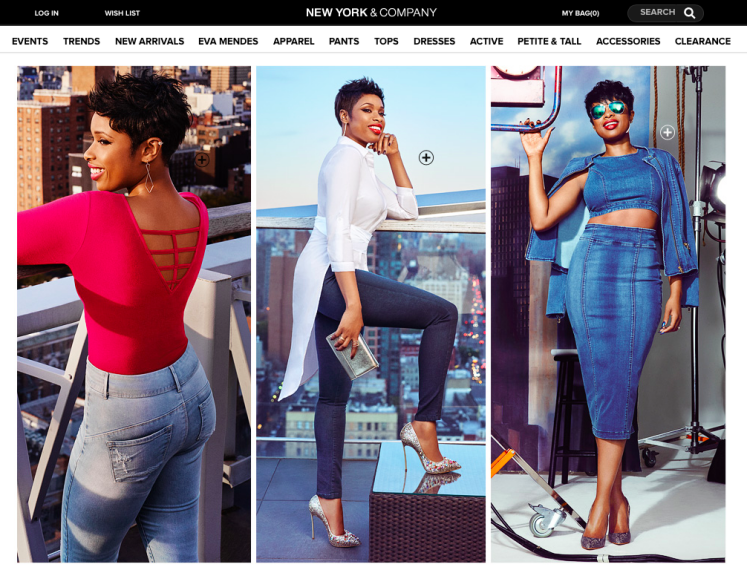With more than 50 percent of in-store sales being influenced by digital channels, it is a crucial time for retailers to provide their customers with the most intuitive digital experience possible across all channels. In this Demandware and L2 webinar, industry experts highlight four investments that successful retail brands must prioritize as they begin to develop new digital experiences for shoppers.

Source: New York & Company
1. Videos and Tutorials
While video is a great asset and a successful tactic for grabbing shoppers’ attention, it can also lead potential customers down a dead end. L2 highlights that video content will have the most success if it lives on or links back to a product page where the shopper can easily learn more or purchase directly.
2. User-Generated Content
User-generated content also works best when it lives directly on a product page, assisting the prospective customer by seeing others’ experiences with the product and assisting brand marketers by enabling customers to advertise the product for them.
3. Guided Selling Tools
A premium web experience will always feature a great set of guided selling tools. These tools include everything from a sophisticated product grid that provides interactive descriptions of the product to rich media content that is vivid, shoppable and extends to other web interaction channels. Retailers use these tools to guide customers to the best fit, the complete outfit, and to get them closer to their products.
4. Bring in Rich Content to Drive Conversion
Successful retailers bring rich content into the ecommerce journey. This enables them to avoid content going to dead ends and directly improves conversion rates and revenue. Ask yourself whether your best content is near the point of purchase. Most retailers are leaving their most valuable content out of the customer purchase journey, forcing shoppers to decide whether they want to explore or shop.
One brand providing an exemplary digital shopping experience is New York & Company, as evidenced through its #itJustFits campaign, which promotes the company’s line of Soho jeans featuring Academy Award winner and American Idol alum Jennifer Hudson. With this campaign, New York & Company has created a complete rich media experience that both focuses on the customer through contextualized, shoppable content while also correlating with the desired metrics of the brand.
The Soho jeans experience includes all the important performance attributes that contribute to what L2 refers to as a “Genius” digital experience. Through the trends section of the main site (avoiding any content silos), New York & Company is encouraging the customer to explore while they shop.
The rich lifestyle images of Jennifer Hudson can bring the customer directly to a product page for purchase. And, the wide-screen YouTube video produced by New York & Company features Hudson speaking about each of her signature looks, and it lives directly in the center of the product page. New York & Company follows this up nicely with an abundance of user-generated content featuring the #itJustFits hashtag with social posts of Hudson and her celebrity friends in the Soho jeans line, while encouraging customers to share posts of themselves rocking the jeans in order to tie the user experience together. The guided selling tools quickly follow with highly informative, in-depth descriptions of each fit of the new Soho jeans to properly educate the customer on which fit may be right for her, complete with high-resolution images of Hudson in her various Soho looks. New York & Company’s Soho digital experience is just one of many initiatives that industry leaders should take notice of if they wish to bring their ecommerce experiences to new heights.
But there are several challenges to making shoppable content as engaging and actionable as the New York & Company experience. In fact, the Content Market Institute and MarketingProfs issued a whitepaper noting that one of the largest issues for retailers is resource constraints, including lack of time and budget. Many retailers believe that investing in a rollout of effective shoppable content is expensive and takes a long time to deploy, placing it out of their reach. Another issue is the quality of the content, as most organizations have great content (lifestyle images, video and user-generated content), but it is an expensive and timely process to build in the animation needed in order to bring these different content elements together. These issues need to be rectified in order to tell the brand story and complete the customer journey with shoppable moments.



